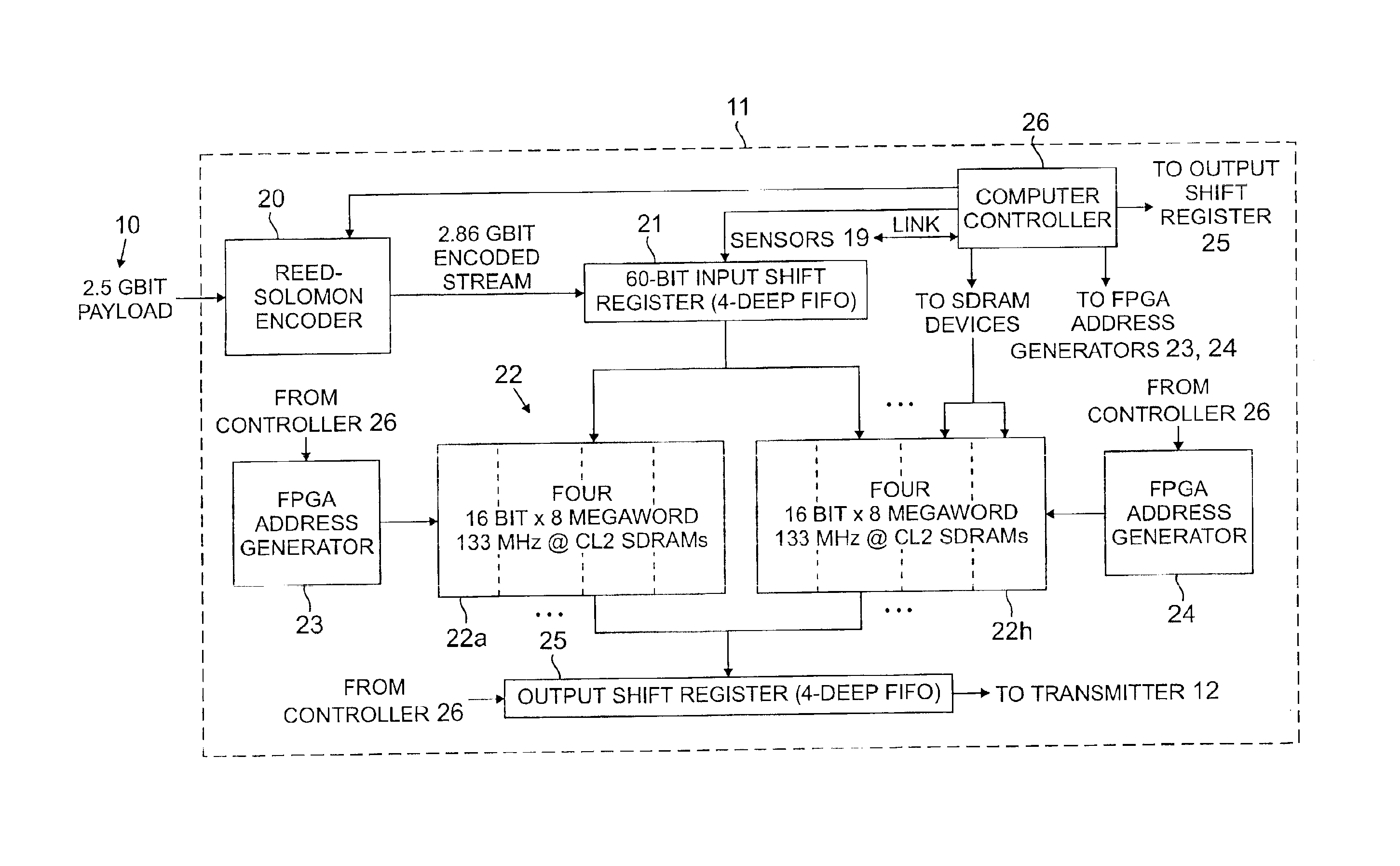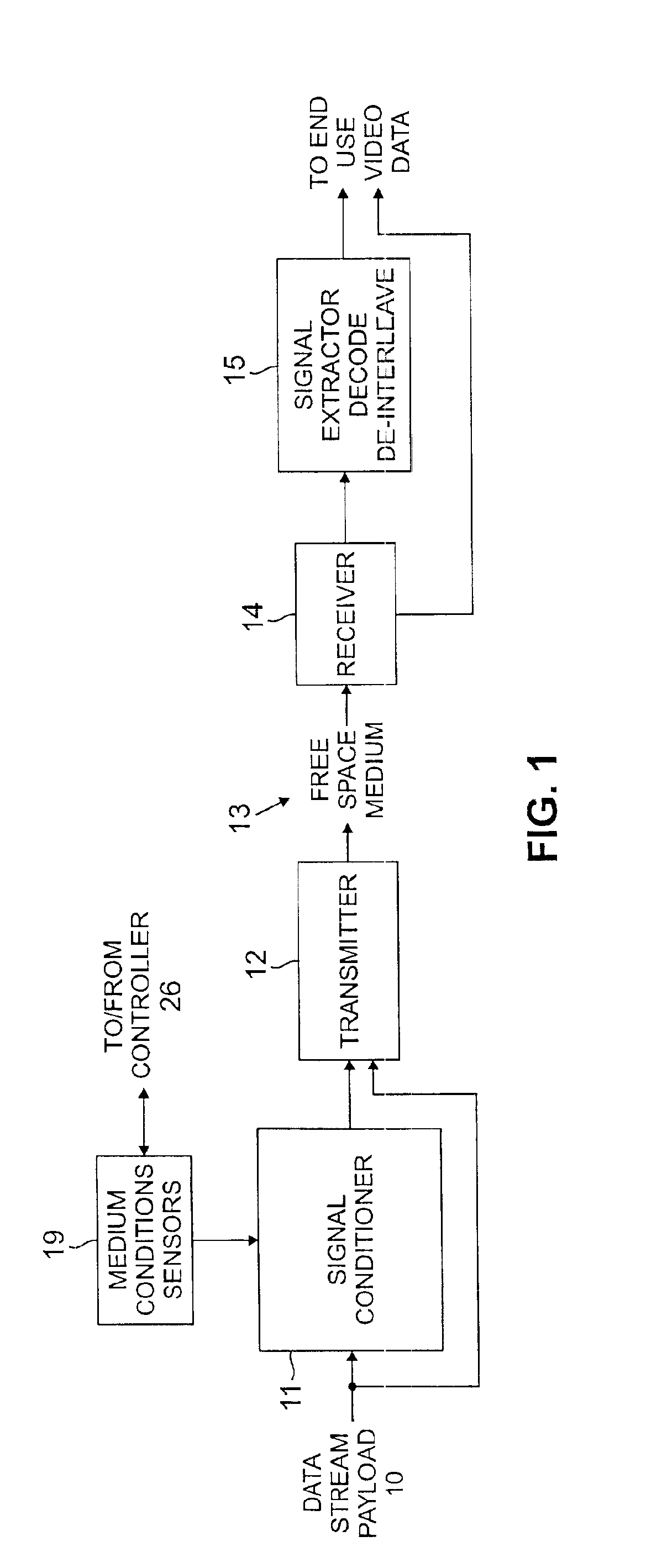Reducing scintillation effects for optical free-space transmission
- Summary
- Abstract
- Description
- Claims
- Application Information
AI Technical Summary
Benefits of technology
Problems solved by technology
Method used
Image
Examples
Embodiment Construction
In the exemplary embodiment described below, the principle of interleaving moderately sized burst-error correction code blocks is used, but on a macro scale much larger than conventionally applied, such that the interleaving for the examples illustrated spans hundreds of millions of bits in order to support recovery from burst errors on the order of tens of millions of bits. Synchronous Dynamic Random Access Memory (SDRAM) device technology is used by way of example, to make it feasible and economical to support the extremely large memory arrays that are required to implement such a process. The large row-column random access overhead, which is universal with SDRAM technology, is substantially reduced by an address remapping of physical addresses. The effect of the address remapping is that overhead cycle bursts are distributed rather than occurring in clusters of consecutive memory references, which is typical when a straightforward use of memory address space is applied. This allo...
PUM
 Login to View More
Login to View More Abstract
Description
Claims
Application Information
 Login to View More
Login to View More - R&D
- Intellectual Property
- Life Sciences
- Materials
- Tech Scout
- Unparalleled Data Quality
- Higher Quality Content
- 60% Fewer Hallucinations
Browse by: Latest US Patents, China's latest patents, Technical Efficacy Thesaurus, Application Domain, Technology Topic, Popular Technical Reports.
© 2025 PatSnap. All rights reserved.Legal|Privacy policy|Modern Slavery Act Transparency Statement|Sitemap|About US| Contact US: help@patsnap.com



